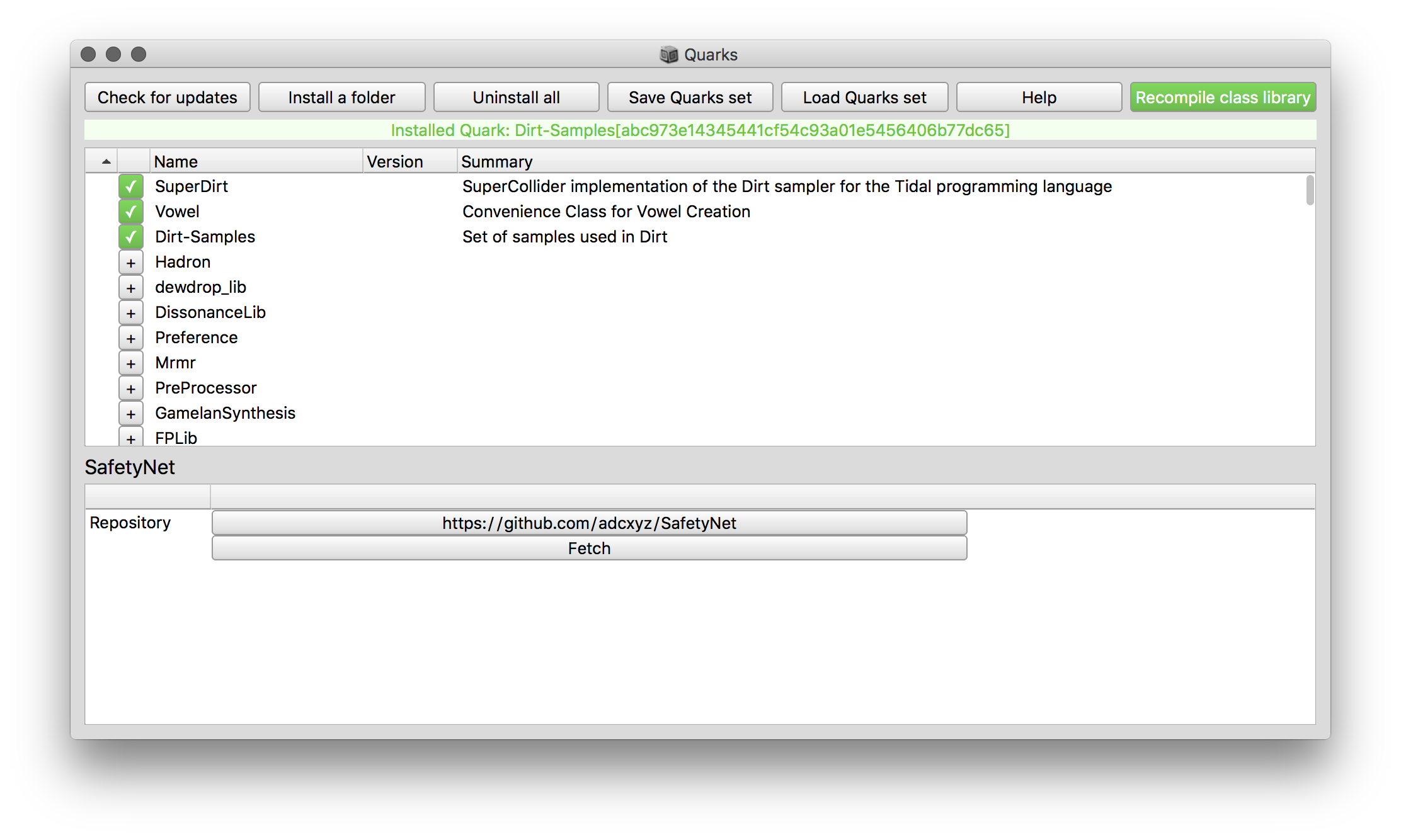
The aim with this book is the same as my initial tutorials written in 2005, i.e., to serve as a good undergraduate introduction to SuperCollider programming, audio synthesis, algorithmic composition, and interface building of innovative creative audio systems.

Furthermore, I can publish the book ad-hoc, get real-time feedback from readers, and disseminate the book in the typical modern ebook formats appropriate to most ebook readers. I have chosen Lean Publishing as the publication platform for this rewriting, as I can write the book in the attractive markdown format and use github for revision control. However, with this updated tutorial, I have decided to port it into a more modern ebook format that would be applicable in the diverse readers on different operating systems. SuperCollider documentation has now gained a new and fantastic documentation format which can be studied by exploring the new documentation system of SuperCollider. html format that became the standard help file format of SuperCollider. scd document format, and finally ported to the. The original tutorial was initially released as. The SuperCollider book is an excellent source for the study of SuperCollider and is highly recommended, but has different aims than this current book as it goes deeper into more specific areas, whilst the current book aims to be present a smoother introduction, a general overview and a specific focus on practical uses of SuperCollider. I have subsequently used this tutorial in diverse workshops given around the world, from Istanbul to Reykjavik from Madrid to Rovaniemi.Īn earlier version of this book was published on the DVD of The SuperCollider Book publised by MIT Press. The tutorial’s focus was not on teaching SuperCollider as a programming language, but to explore key concepts, from different synthesis techniques and algorithmic composition to user interfacing with graphical user interfaces or hardware. Lacking the ideal course book, I created a tutorial that I’ve used for teaching synthesis and algorithmic composition in SuperCollider. This book is an outcome of teaching SuperCollider in various British higher education institutions since 2005, in particular at the Digital Music and Sound Arts programme at the University of Brighton, Music Informatics at the University of Sussex, Sonic Arts at Middlesex University and Music Informatics at the University of Westminster. There are other environments that operate in similar space, such as Pure Data, CSound, Max/MSP, ChucK, Extempore, and now JavaScript’s Web Audio, but I believe that SuperCollider excels at important aspects required for such work, and for this reason it has been my key platform for musical composition and instrument design since 2001, although I have enjoyed working in other environments as well. Unlike much commercial software, one of the key design ideas of SuperCollider is to be a tabula rasa, a blank page, that allows musicians to design their own musical compositions or instruments with as few technological constraints as possible. It has become well known for its fantastic sound, strong object oriented design, useful primitives for musical composition, and openness in terms of aims and objectives. SuperCollider is one of the most expressive, elegant and popular programming languages used in today’s computer music. Chapter 15 - Musical Patterns in the SCLang.Chapter 14 - Musical Patterns on SC Server.Busses in SC (Audio and Control Busses).Chapter 14 - Busses, Nodes, Groups and Signalflow.Chapter 13 - Fast Fourier Transform (FFT).Chapter 10 - Granular and Concatenative Synthesis.Wavetables and wavetable look-up oscillators.

Chapter 8 - Envelopes and shaping sound.Bell Synthesis using Subtractive Synthesis.Using Control to set multiple parameters.Some Additive SynthDefs with routines playing them.
#Supercollider gui serial#


 0 kommentar(er)
0 kommentar(er)
